Butterflies and moths are active, fascinating insects that you’ll find all over the world. With over 160,000 species, these bugs in the order Lepidoptera are a fixture in outdoor spaces. Although most people will be quick to tell you that there is a difference between butterflies and moths, scientists tend to disagree. In reality, when we get down to trying to tell moths and butterflies apart, it’s not always so easy. What’s the story here?
In this Naturalist Answers post, we’ll explore this topic and learn the basics of how to tell moths from butterflies. You’ll see that there is more to the difference between butterflies and moths than meets the eye.
Behavior
As different as night and day?
One of the first things I hear from people trying to tell moths from butterflies is that butterflies are out in the day, and moths are out at night. But is that really true?
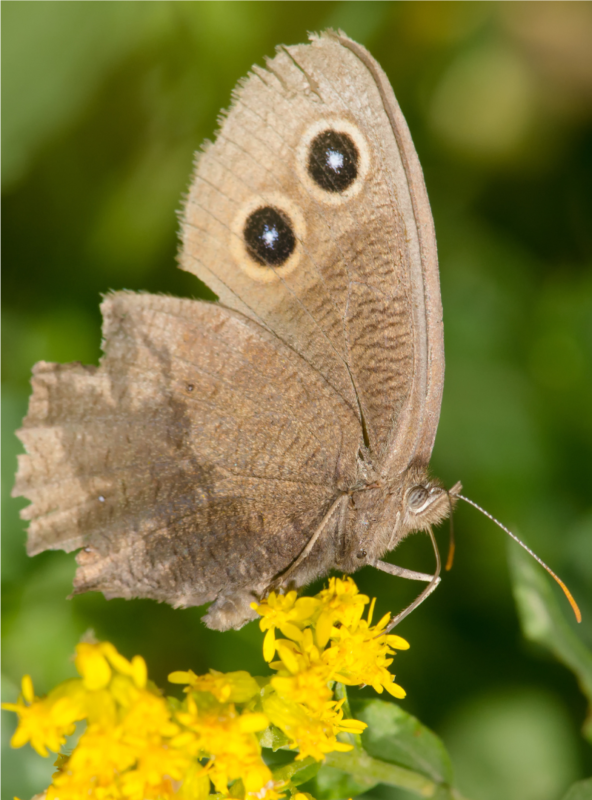
Generally speaking, this isn’t a bad rule to use. Almost all butterflies are entirely diurnal, with the exception of some species that migrate at night. Meanwhile, we are more likely to encounter moths at night, especially when they gather around sources of light. However, a great many species of moths are also active during daytime.
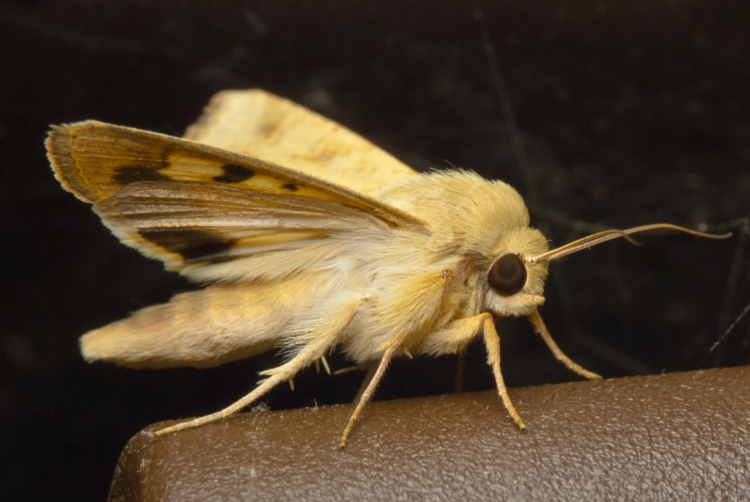
So what does that mean for us naturalists? Well, it means if you find an active, fluttery bug with big wings at nighttime, it’s almost certainly a moth. But during the day, you may have to do more thinking!
Wing posture
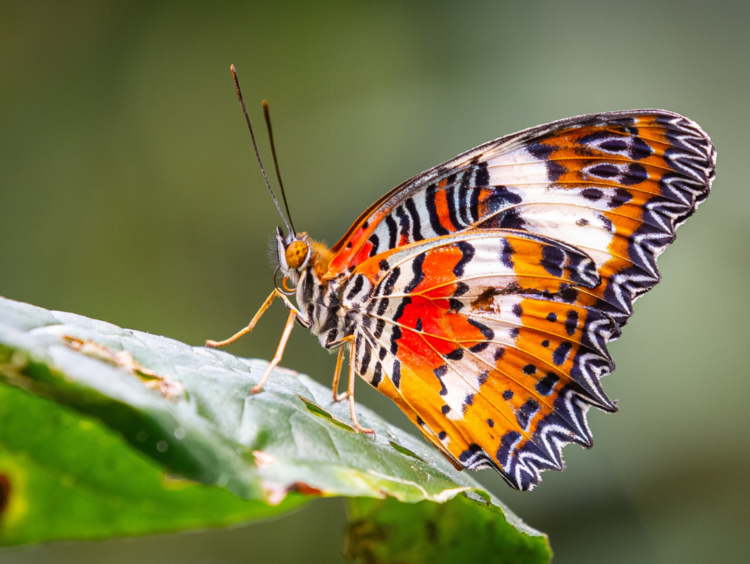
Many winged insects can be told apart by how they hold their wings when they are at rest. In the case of butterflies and moths, this can be especially helpful. In temperate regions, most butterflies hold their wings folded together vertically above their back.
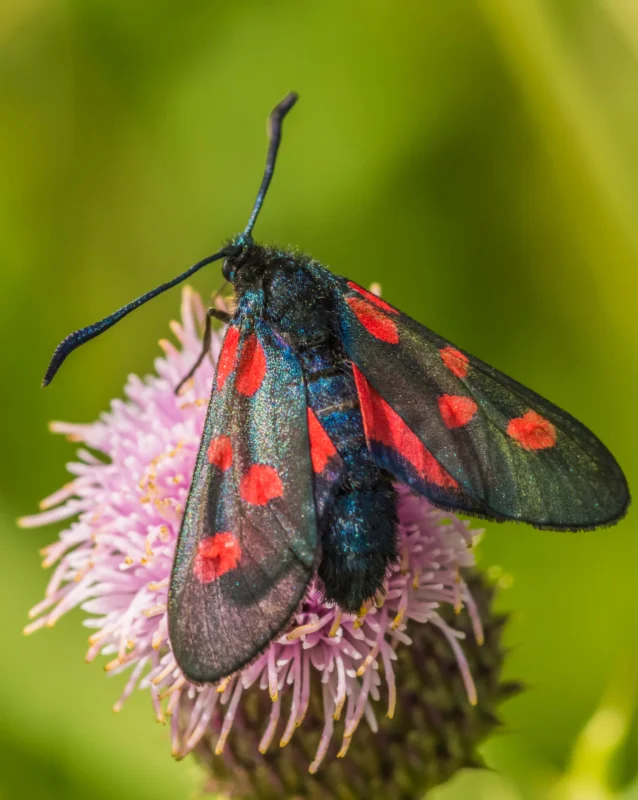
By contrast, many moth species keep their wings folded longways like a tent over their backs. Moths also have a huge diversity of wing postures, many of which help them camouflage from predators. Because of this, it’s better to rely less on whether their wings are tented, and more on whether they don’t hold their wings like a butterfly.
Appearance
Beginner Naturalists often learn to use their eyes first. Like other primates, we humans rely heavily on our vision for orienting ourselves in the world. Even without the help from things like binoculars or magnifying glasses, we can pick up on visual cues that will help us tell moths from butterflies.
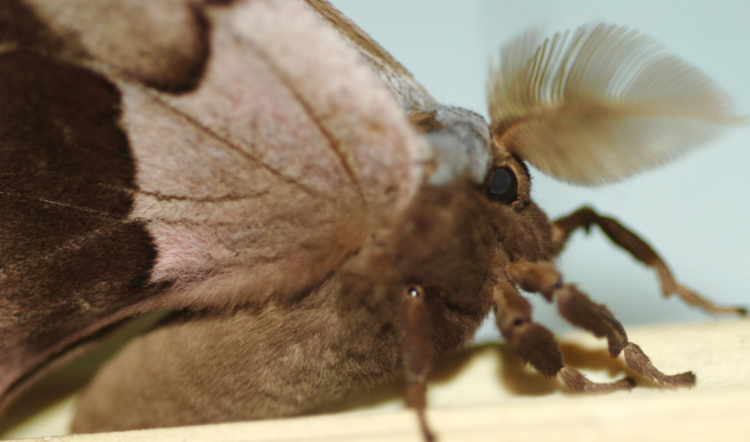
Importantly, these cues apply to most butterflies and moths, and there will be exceptions. Because of this, you may need other sources of information for certain species.
Generally, you’ll spot the following field marks on most butterflies:
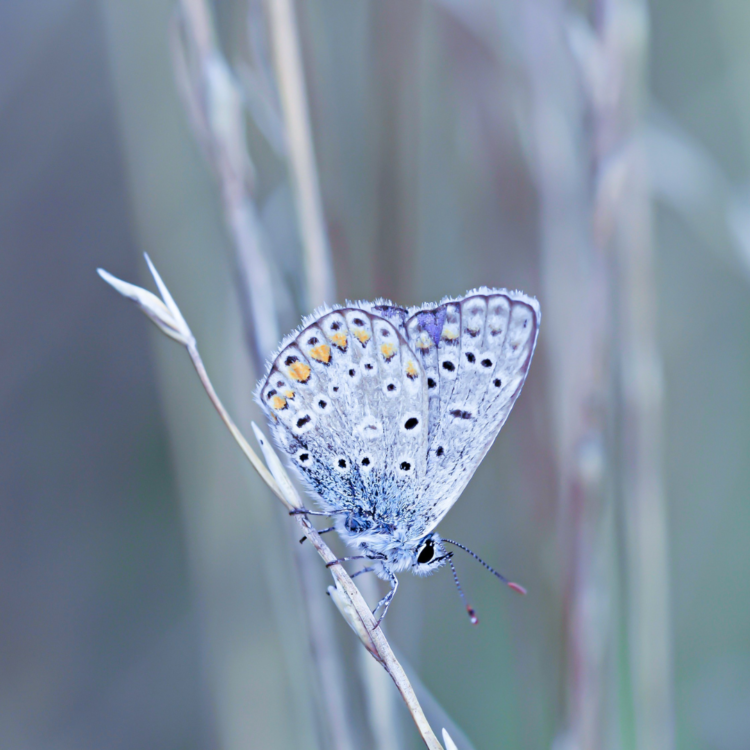
- Often brighter colors
- Thin antennae that end in a club shape
- Slender bodies
- Reduced front legs (it may look like there are only four!)
- Large, rounded eyes
- Bodies relatively hairless
By contrast, moths will often show these signs:
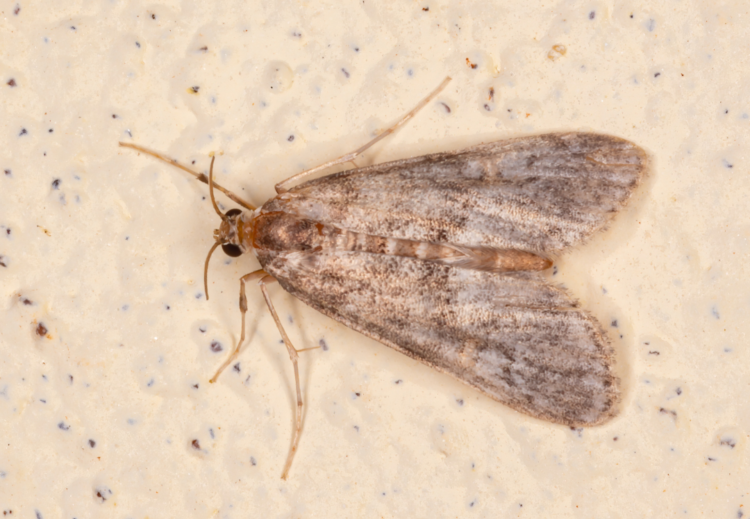
- Huskier, fatter bodies
- typically duller, more drab colors
- Antennae that are feathery (males) or thin and tapering to a point (females)
- Sometimes smaller eyes that don’t stick way out of the head
- Six legs that are clearly visible
- Lots of fuzz or fluffy hair on their bodies
Looking closer
Another key difference between butterflies and moths, although it can be hard to see, is the presence of a frenulum. This is like a little hook that keeps the forewings and hindwings together in moths, but butterflies don’t have one. For moths, this makes their four wings act like two wings.
Butterflies, meanwhile, have all four wings moving more independently, which helps explain their more lilting, messy flight pattern.
Life Cycle
Insects often have pretty complicated life cycles that involve stages like egg, larva, pupa, and imago (adult), or intermediate juvenile stages called nymphs. Butterflies and moths can differ in the way they look and behave in these different stages as well.
Being both members of the huge insect order Lepidoptera, moths and butterflies have similar life cycles:
- They lay eggs near a food source
- Those eggs hatch into larvae called caterpillars
- The larvae eat tons of their chosen food, and grow by molting
- Once fat and large enough, the caterpillars molt into a pupa
- Inside the pupa, the animal metamorphoses into the adult (winged) form
Caterpillars
Caterpillars vary so much between the many species of butterflies and moths that it is difficult to use them to distinguish between the two. You can use some rough patterns, however, to distinguish certain groups that are almost certainly moths:
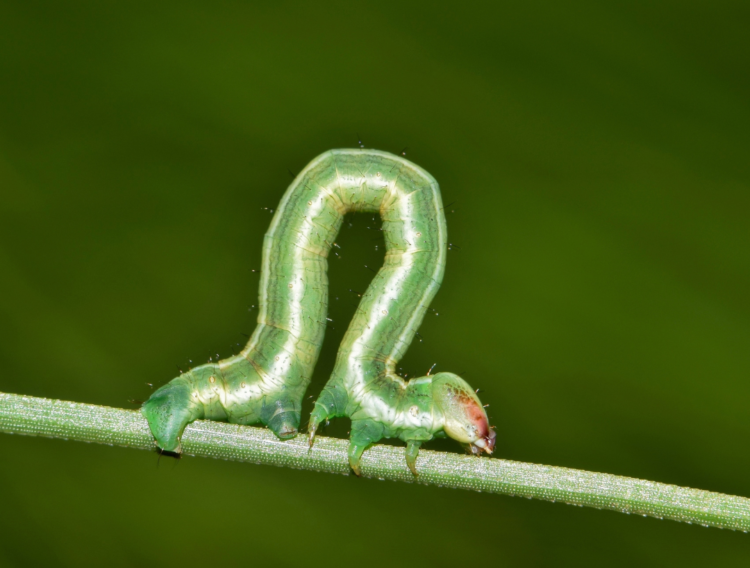
- Being in large groups or “nests”: butterfly caterpillars often fly pretty solo unless they just happen to be eating the same plant. By contrast, many moth caterpillars are highly social and gather in large groups, or even make silk nests to stay in together.
- The caterpillars of a huge family of moths called the Geometridae all walk by “looping” themselves along the ground lengthwise. This weird way of walking earned them the nickname “inchworm”. That type of walking is typically diagnostic of this type of moth, and can help you rule out butterflies.
- The most common butterfly caterpillars eat almost exclusively plants. Though there are exceptions to this, people don’t commonly come across them. If you find caterpillars eating flour, grain, or wool, they are much more likely moths!
Pupa or cocoon
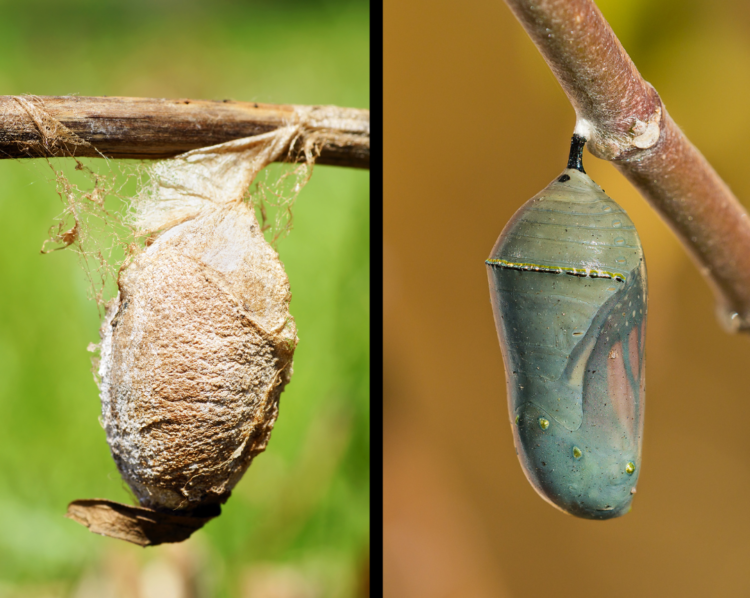
If you live in a seasonal or temperate climate, you’ll only see adult butterflies and moths during the Spring and Summer. They survive the winter by going dormant in cozy hiding places like the leaf litter. Many others overwinter as pupae, which you might find attached to tree bark, plants, or man-made structures like park benches.
Butterfly pupae are typically bare and sometimes brightly colored. On the other hand, moth pupae are often surrounded by a layer of protected silk. Sometimes, objects like leaves or shed skin are integrated in the silk. This surrounding layer is called a cocoon.
By the numbers
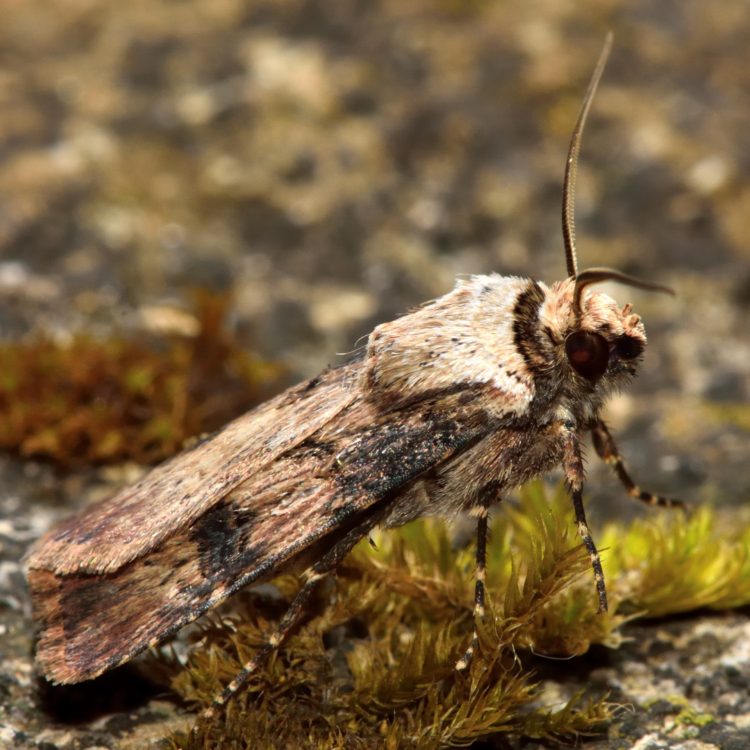
Even if you aren’t a math lover, it’s helpful to consider the numbers game around moths and butterflies. As it turns out, you’re much more likely to encounter moths than butterflies, although people tend to notice butterflies more often. While there are six families of butterflies on the planet (if you include Hesperiidae, the skippers), there are at least 20 times that many families of moths.
It’s no different at the species level. While there are probably somewhere around 17,000 species of butterfly, there are probably more than 160,000 species of moths. So realistically speaking, butterflies make up only a small portion of lepidoptera on Earth.
Difference between moths and butterflies: a little messy
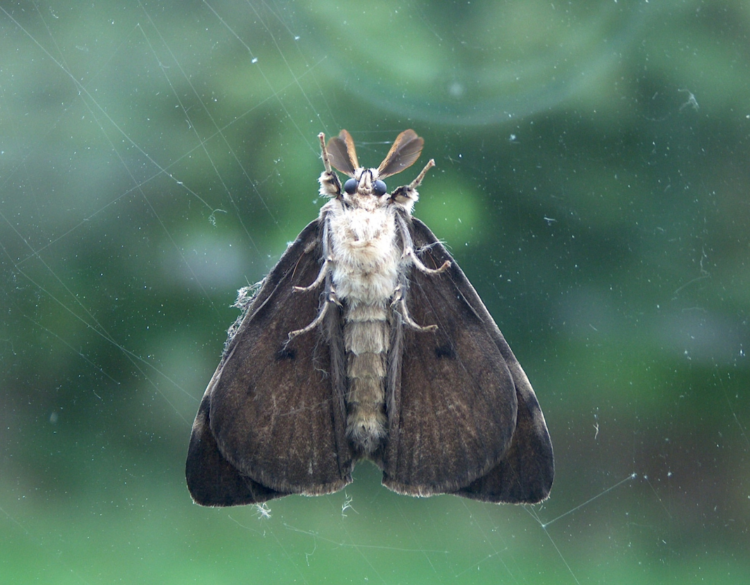
Just like the difference between hawks and eagles, the split between moths and butterflies is not as clean as it might seem. Not only are there occasional exceptions to the rules I presented here, the story gets more complicated.
According to taxonomists, scientists who classify species, and phylogeneticists who study how species are related, here is no clear evolutionary divide between butterflies and moths. While we can point to specific families that are definitely moths and definitely butterflies, there’s a missing piece to the story.
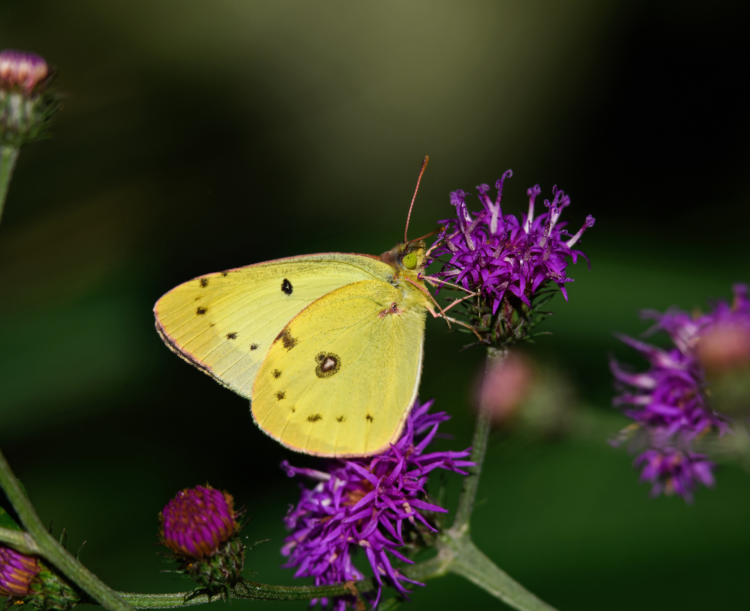
The different butterfly species don’t seem any more related to one another than moth species do amongst themselves.
In other words, butterflies don’t form a “natural group”, but are descended from different lepidoperan ancestors. While dogs and cats, for example, can be traced back to respective canine or feline ancestors by which we can separate them, the situation with butterflies and moths is a mess.
So, while you can tell them apart fairly often, the biological truth of them being different is a mess, just like with predatory birds.
Thanks for reading about the difference between butterflies and moths!
I hope you found this post helpful. Have you had a chance to identify some moths and butterflies in your yard? Share with us in the comments, or drop me a message using the Contact page!

